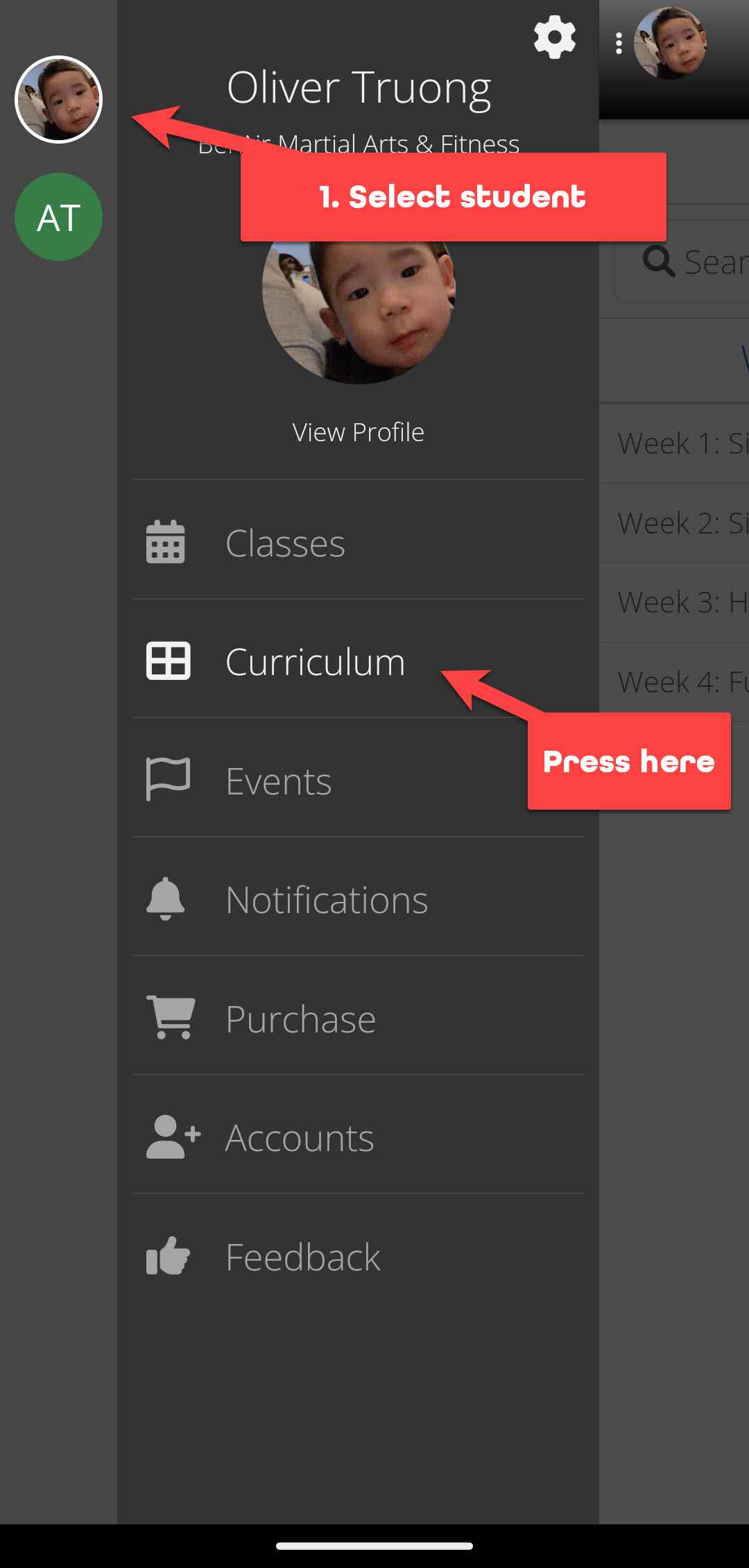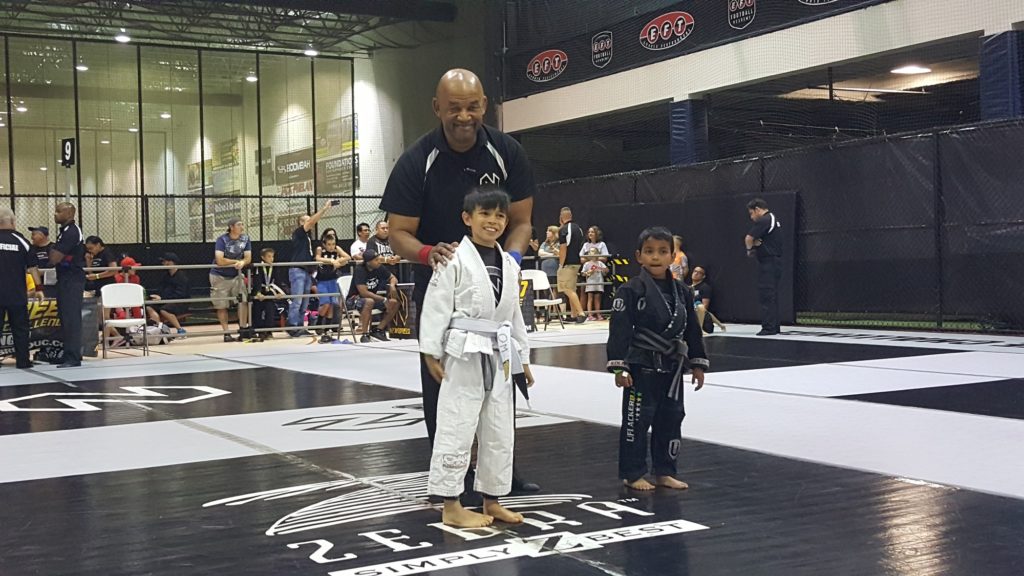- Download the Zenplanner mobile app here.
- Log in using the same email used when creating your kid’s Zenplanner account
- Select your kid’s profile
- Tap on the Curriculum option
- See the video techniques from the current curriculum block




Best practices for parents
Before class
During
After
Rules for students
1 in 54 children is diagnosed with an ASD
Autism Speaks conducted a national survey on community youth organizations. The top barriers that families experience to having their child participate in a youth organization are:
1 in 11 children is diagnosed with ADHD
After-school programs are a blessing for kids with ADHD. A study showed that children with ADHD who participated in after-school activities had nearly 40 percent lower odds of parents reporting them having a moderate or severe case of missing school. Prior research has established that increased physical activity and less screen time among these children are both linked to less severe cases.

Jiu-jitsu, being mostly on the ground, means that instructors get on the floor to work with children at their level. Jiu Jitsu can be combined with Floortime therapy. Depending on the child’s development maturity, instructors gauge how much freedom to give and when to follow their lead. Practicing Jiu-jitsu can be easily perceived as a game for any child especially during live rolling. Instinctively, children try to escape when they are pinned underneath or give their best to stay on top while the other tries to escape.
Being in such close contact with another person stimulates their senses. Jiu jitsu put them in a position where they can feel the weight of their training partner, the pressure he/she applies, and also the sensation of being held. Over time, they usually become comfortable sharing the experience with their training partners and tend to open their communication circle. Jiu Jitsu also provide many opportunities for children to help each other learn techniques. The 2-ways communication help to build social skills and self-esteem.
After being stuck in the same situation for a couple of times, children are more willing to know what to do which is the ideal opportunity to improve their learning skills. Once they observe the demonstration given by instructors, they will drill it with their training partner and try to apply the technique during live rolling. The technique might not work without executing all the key steps which gives children an incentive to pay attention and gives instructors a way to evaluate the child’s focus. Over time techniques become more complicated with a higher level of details which pushes children to continually learn.
Jiu jitsu is known to improve fitness, balance, coordination and motor skills but most importantly it can also improve their body awareness. Correctly controlling your movement, weight distribution, and strength is essential, especially when partnering with a smaller training partner. During live rolling they will also be tested to control their emotions, which can be very difficult for some children.
During live sparring, children are learning to apply the technique on a training partner that is not cooperating. It requires them to grapple their way into dominate positions or escape uncomfortable and compromising positions. It is physically and mentally demanding. Children learn early to not give up and recover from failures which help build their confidence.
Children with lower confidence tend to be picked on by bullies who target easy prey. A child with Jiu-jitsu experience will be able to take the attacker to the ground and neutralize the situation without throwing a single punch. Not causing any damage helps to diffuse the situation without having it escalated.
These are my top 6 reasons why Jiu-Jitsu can be so beneficial for kids with autism and ADHD but there are many more such as improving:
Below is a speech I gave at a Toastmasters International club on January 2017.
Last Thanksgiving, I asked a dozen kids who are between 5 to 9 year-old: What are you thankful for? I expected to hear family, friends, food or vacation. Instead they all came up with this answer. Can you guess? Electronics! You cannot believe how enthusiastic they were when they shared with me the love toward their Playstation, Xbox, ipad, smart phone and computer.
Nowadays, kids are connected 24/7. They constantly chat, browse media and play games online. They are expert consumer of technology. It’s not surprising since we are surrounded by technology and we all have become dependent. We communicate, bank, search/share information, book flight/car ride/restaurant…
But! Very few children will be able to understand the basic on how these machines are run. Even Fewer will be involved in creating them especially since 90% of US schools don’t teach computer of science today.
That’s why I would like to share with you 3 reasons parents should consider having their children learn computer programming aside from job security and a high paying salary.
Learn life skills
People think that programming is just writing lines and lines of code but it’s really more like creating a cooking recipe. Programming is truly an expression of creativity that involves plenty of diverse skills:
– Taking an idea and turning it into a fully functional project helps kids to have a sense of process design (build, test, refine).
– Breaking down the complexity into simple parts helps them improve problem solving and organization skills.
– Finding and fixing bugs in the face of frustration when things aren’t going well require persistence (learning to not giving up), precision (a tiny mistake can prevent the entire program front running).
– Programming also helps kids to become more ambitious as they want to improve and expand what they have built while not settling for the minimum.
– Programming also involves math and logic which could help their academics.
Along with learning life skills, the second reason to learn programming is that it will…
…Build their confidence
Here’s why. Children see technology in their everyday life and have no idea how it works.
When they get exposed to programming, they slowly develop a better sense of how machine works and how they could be involved as a technology producer instead of just a consumer. Realizing that they have the potential to help people through technology is very empowering and builds their confidence.
The 3rd reason revolves around humanity.
Practicing teamwork
In today’s society, there is a misconception of the programmer who is someone very quiet, lacking of social skills, working alone, and in the dark for very long hours. Not completely false but programmers have to interact and collaborate with many people to get their work done. Great things are achieved when smart people collaborate.
Learning programming encourages kids to challenge each other, explain to others about their thoughts, find common ground, and ultimately create ideas together.
The best part is that learning to program has been made much more intuitive and fun. I have been experimenting with these new methods and online platforms and it works! It is such a delight. They are fully engaged and smile when they see their own program run and that’s what it is all about.
To summarize, learning programming can be seen as a vehicle to learn other skills such as creativity, logic, problem solving, organization. Better understanding of the digital world they are living in can build their confidence. Finally programming can expose them to collaboration in their early years.
We have the opportunity to take advantage of kids’ passion,sorry addiction, for electronics and introduce them to computer programming through exciting and collaborative activities. Once they get a hang of it they will realize their potential and the infinite possibilities that are only limited by their imagination.